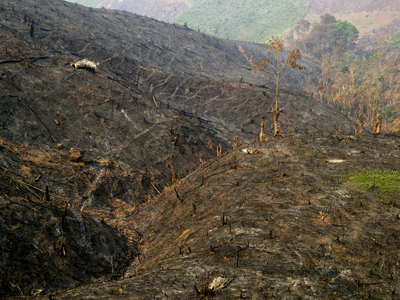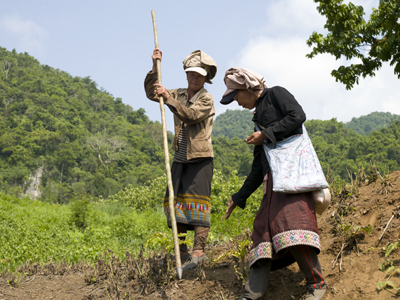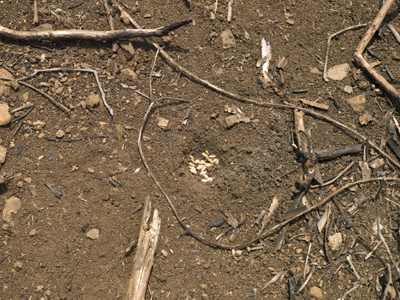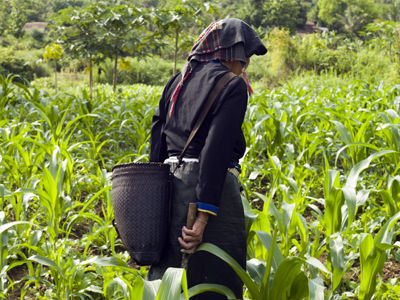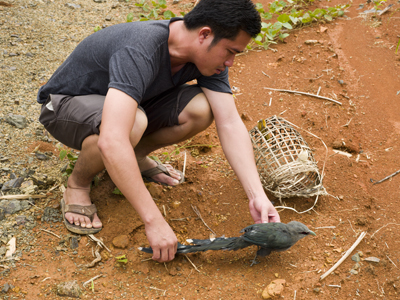Planting rice
By Tessa Bunney on 28 May 2013As the year goes on I have been able to gradually add pieces to the puzzle of the seasonal agricultural cycle. Planting hill rice is completely different to paddy rice and began last month with the burning of the cleared fields on the mountainside. Swidden cultivation or ‘hai’ in Laos consists of cutting the natural vegetation, leaving it to dry and then burning it for temporary cropping of the land, the ash acting as a natural fertiliser.
There’s been enough rain recently for the farmers to begin to plant the rice seed. In slash and burn cultivation (normally) the man walks round the land with a big stick making small indentations in the soil and the woman follows behind throwing from quite a height and with incredible precision, a handful of rice seed into the hole. When it next rains the soil will wash into the hole and cover the rice.
The Lao government’s objective of reducing and stabilising shifting cultivation is the major reason for the decrease and other changes recently observed in shifting cultivation areas throughout Laos.
I then continued my journey to the Tai Dam village of Ban Na Mor where I have been recording the seasonal products at their amazing market – this time there were 21 different products from the garden and forest compared to previous visits. Everything from jack fruit to tamarind, bee larvae to birds of prey. I set up my light in the shop borrowing the items or on occasion buying them to take to the village for dinner. After an incredible dinner of duck, sticky rice and a myriad of wild greens we stayed the night so I could go out foraging with the women early in the morning.
After being required to slaughter a village duck for dinner, the next day my translator, Vieng bought this amazing bird from the market and set it free. I think its a Buddhist thing.
